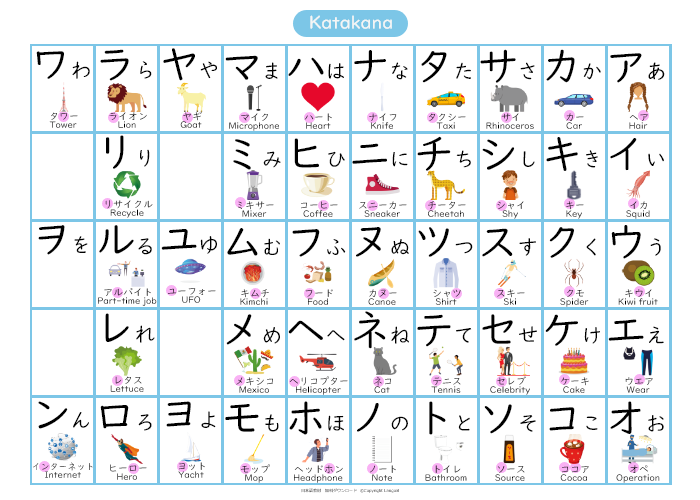
A Complete Guide to
Learning Katakana for Beginners
If you’re learning Japanese, mastering Katakana (カタカナ) is essential. This script is widely used for foreign words, brand names, and even onomatopoeia. In this guide, we’ll explain what Katakana is, why it’s important, and how to learn it effectively.
What is Katakana?
Katakana is one of the three Japanese writing systems, alongside Hiragana and Kanji. It consists of 46 basic characters, each representing a syllable, similar to Hiragana. However, Katakana has a more angular and sharp appearance, making it easy to distinguish from Hiragana.
Why Should You Learn Katakana?
- Used for Foreign Words – Many loanwords from English and other languages are written in Katakana. For example:
- コーヒー (kōhī) – Coffee
- ホテル (hoteru) – Hotel
- コンピューター (konpyūtā) – Computer
- Essential for Reading Menus and Signs – Japanese restaurants, stores, and advertisements frequently use Katakana.
- Common in Pop Culture – Many anime, manga, and video game terms are written in Katakana.
- Used for Emphasis – Similar to italics in English, Katakana is sometimes used for stylistic emphasis.
The Full Katakana Chart
Katakana consists of the following syllables:
- Basic Characters: ア (a), イ (i), ウ (u), エ (e), オ (o), カ (ka), キ (ki), ク (ku), ケ (ke), コ (ko), etc.
- Dakuten (゙) and Handakuten (゚): Modifies certain characters to create additional sounds:
- カ (ka) → ガ (ga)
- サ (sa) → ザ (za)
- タ (ta) → ダ (da)
- ハ (ha) → バ (ba), パ (pa)
- Yōon (Combination Sounds): Smaller ヤ (ya), ユ (yu), ヨ (yo) combine with other characters to form sounds like:
- キャ (kya), シュ (shu), チョ (cho)

How to Learn Katakana Effectively
- Practice Writing – Repeatedly write each character to develop muscle memory.
- Use Flashcards – Flashcards help reinforce recognition and recall.
- Read Loanwords – Start by reading familiar words written in Katakana.
- Try Katakana Games – Online quizzes and apps make learning fun.
- Use Mnemonics – Associating images with characters can aid memorization. For example, シ (shi) resembles a smile.
Common Mistakes to Avoid
- Confusing Similar Characters – Some Katakana look alike, such as シ (shi) and ツ (tsu) or ソ (so) and ン (n).
- Mixing Hiragana and Katakana – Since both scripts have similar sounds, learners sometimes mix them up.
- Ignoring Proper Pronunciation – Some Katakana words don’t sound exactly like their English counterparts, so listening practice is important.
Conclusion
Katakana is a vital part of Japanese writing, especially for foreign words and names. By practicing regularly and using effective learning methods, you’ll master Katakana quickly and enhance your Japanese reading skills.
Start learning today and open the door to understanding more Japanese words!
